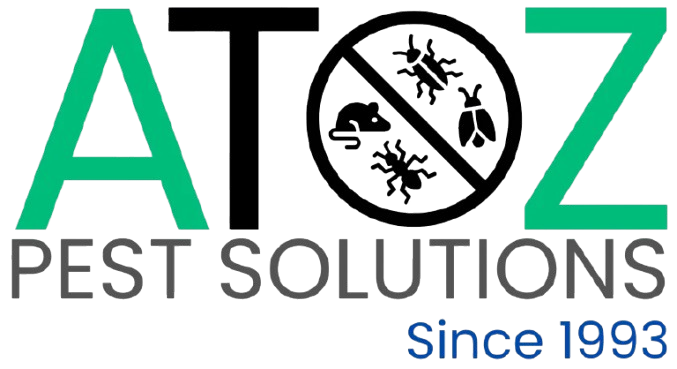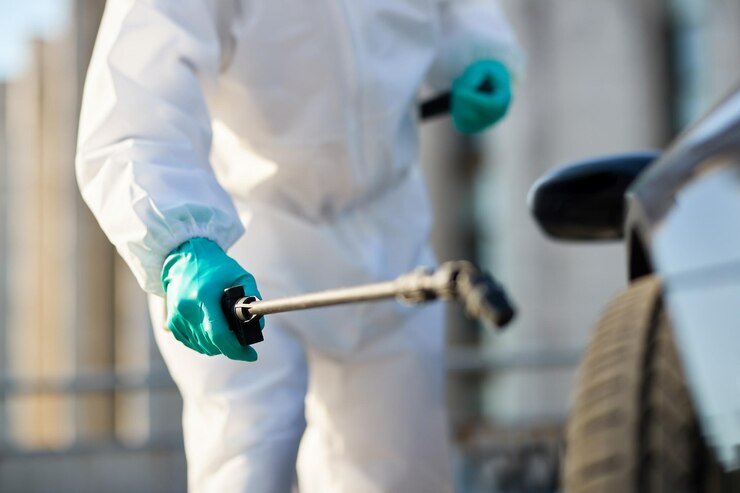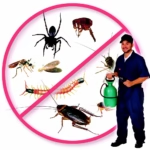Pest control is a crucial aspect of maintaining healthy and productive environments, whether in agriculture, gardening, or urban settings. However, with a variety of methods available, choosing the right approach can be challenging. Two prominent methods are herbal pest control and chemical pest control. In this comprehensive guide, we’ll delve into the differences between these two methods, their respective benefits and drawbacks, and how they impact both human health and the environment.
1. Introduction to Pest Control Methods
Pest control encompasses a range of strategies aimed at managing and mitigating the impact of pests. These methods are generally categorized into:
- Herbal (Natural) Pest Control: Utilizes naturally occurring substances and biological processes to manage pest populations.
- Chemical Pest Control: Relies on synthetic chemicals and pesticides to eliminate pests.
Understanding the distinctions between these approaches is vital for selecting the most appropriate and sustainable pest control strategy for your needs.
2. Herbal Pest Control: An Overview
2.1 What is Herbal Pest Control?
Herbal or natural pest control involves using plant-based substances, essential oils, and other natural materials to repel or eliminate pests. This method leverages the inherent properties of plants and their extracts, which have been used historically for pest management.
2.2 Common Herbal Pest Control Methods
- Essential Oils: Oils such as peppermint, lavender, and eucalyptus are known to deter insects like mosquitoes and ants.
- Neem Oil: Derived from the seeds of the neem tree, neem oil disrupts the life cycle of insects and acts as a repellent.
- Diatomaceous Earth: This powdery substance, made from fossilized algae, is effective against a range of pests by causing physical damage to their exoskeletons.
- Insecticidal Soaps: These soaps, often made from natural oils and fats, target soft-bodied insects like aphids and whiteflies.
2.3 Benefits of Herbal Pest Control
- Eco-Friendly: Herbal methods are generally biodegradable and have minimal environmental impact.
- Low Toxicity: These methods are less likely to harm humans, pets, and beneficial insects.
- Sustainable: Many herbal pest control options are renewable and can be produced locally.
2.4 Drawbacks of Herbal Pest Control
- Limited Effectiveness: Herbal methods may not be as potent as chemical pesticides and might require frequent reapplication.
- Variable Results: The efficacy of herbal remedies can vary based on pest type and environmental conditions.
- Labor-Intensive: Some herbal methods may require more effort in preparation and application.
3. Chemical Pest Control: An Overview
3.1 What is Chemical Pest Control?
Chemical pest control involves using synthetic pesticides and chemicals to eliminate or manage pest populations. These chemicals are designed to target specific pests and are often used in commercial and agricultural settings.
3.2 Common Chemical Pest Control Methods
- Insecticides: Designed to kill insects, these chemicals can be classified into contact poisons, systemic poisons, and stomach poisons.
- Herbicides: Used to control unwanted plants (weeds), herbicides can affect plant growth and are often used in conjunction with insecticides.
- Rodenticides: These are chemicals specifically formulated to kill rodents, often through ingestion.
- Fungicides: Applied to plants to prevent or manage fungal infections.
3.3 Benefits of Chemical Pest Control
- High Efficacy: Chemical pesticides are often highly effective at rapidly controlling large pest populations.
- Convenience: Chemical methods are usually straightforward to apply and require less frequent reapplication compared to herbal alternatives.
- Broad Spectrum: Many chemical pesticides are designed to target a wide range of pests.
3.4 Drawbacks of Chemical Pest Control
- Environmental Impact: Chemicals can persist in the environment, potentially contaminating soil, water, and non-target organisms.
- Health Risks: Exposure to synthetic pesticides can pose health risks to humans and animals, including potential long-term effects.
- Resistance Development: Pests can develop resistance to chemicals over time, leading to reduced effectiveness.
4. Environmental and Health Impacts
4.1 Environmental Impact
- Herbal Pest Control: Generally considered more environmentally friendly, herbal methods contribute less to pollution and ecosystem disruption. However, their impact can vary based on the scale of application and specific substances used.
- Chemical Pest Control: Chemical pesticides can lead to soil and water contamination, adversely affect non-target species, and disrupt ecosystems. The accumulation of chemicals in the food chain poses risks to wildlife and human health.
4.2 Health Impact
- Herbal Pest Control: Natural pest control methods are typically safer for humans and pets. However, some individuals may still experience allergic reactions to certain natural substances.
- Chemical Pest Control: Synthetic pesticides can pose significant health risks, including respiratory problems, skin irritation, and long-term effects such as cancer. Proper handling and adherence to safety guidelines are essential to mitigate these risks.
5. Choosing the Right Method
When deciding between herbal and chemical pest control, consider the following factors:
- Type of Pest: Some pests may be more effectively managed with chemical control, while others may be adequately controlled with herbal methods.
- Environment: Evaluate the environmental impact of each method and choose one that aligns with your sustainability goals.
- Health Concerns: Assess potential health risks associated with each method and select the one that minimizes risk for humans, pets, and beneficial organisms.
- Effectiveness and Cost: Consider the effectiveness and cost of each method. Herbal remedies may require more frequent application, while chemicals can provide quicker results but may involve higher costs and potential risks.
6. Integrated Pest Management (IPM)
An integrated approach to pest control combines multiple methods to achieve effective and sustainable pest management. IPM strategies may include:
- Cultural Controls: Altering agricultural practices to reduce pest habitats.
- Biological Controls: Using natural predators or parasites to control pest populations.
- Mechanical Controls: Employing physical barriers or traps to manage pests.
- Chemical and Herbal Controls: Utilizing both chemical and herbal methods judiciously as part of a broader strategy.
In summary, both herbal and chemical pest control methods have their unique benefits and drawbacks. Herbal pest control offers an eco-friendly and low-toxicity alternative, though it may require more effort and may not always provide immediate results. Chemical pest control, while highly effective and convenient, carries potential environmental and health risks.
Choosing the right pest control method depends on various factors including the type of pest, environmental considerations, health impacts, and cost. Adopting an integrated pest management approach can help balance these factors and achieve effective pest control while minimizing negative impacts.
By understanding the differences between herbal and chemical pest control, you can make informed decisions that best suit your needs and contribute to a healthier and more sustainable environment.













